Jindian Park, Kunming - Eintrittskarten, Öffnungszeiten, Lage und Highlights
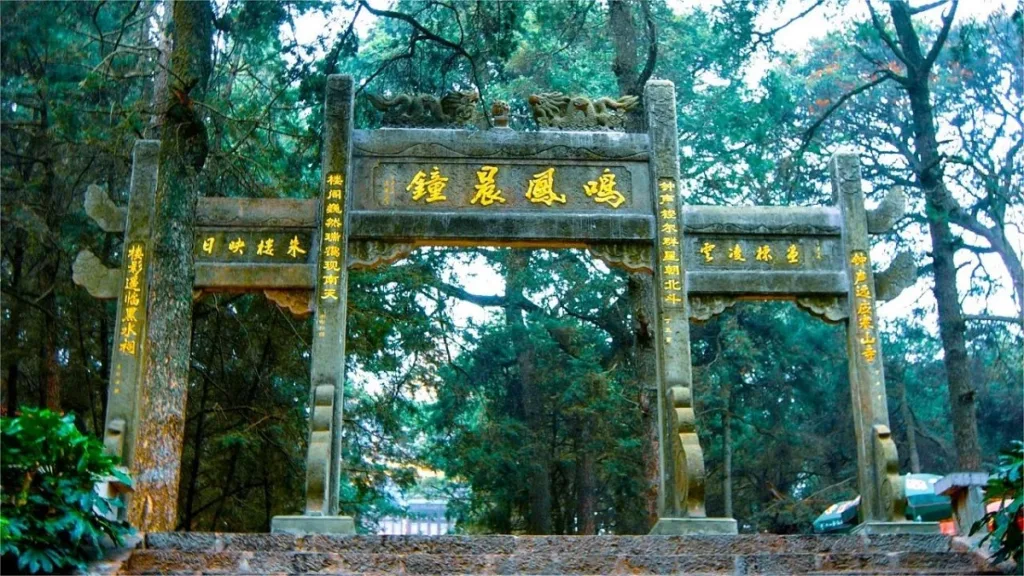
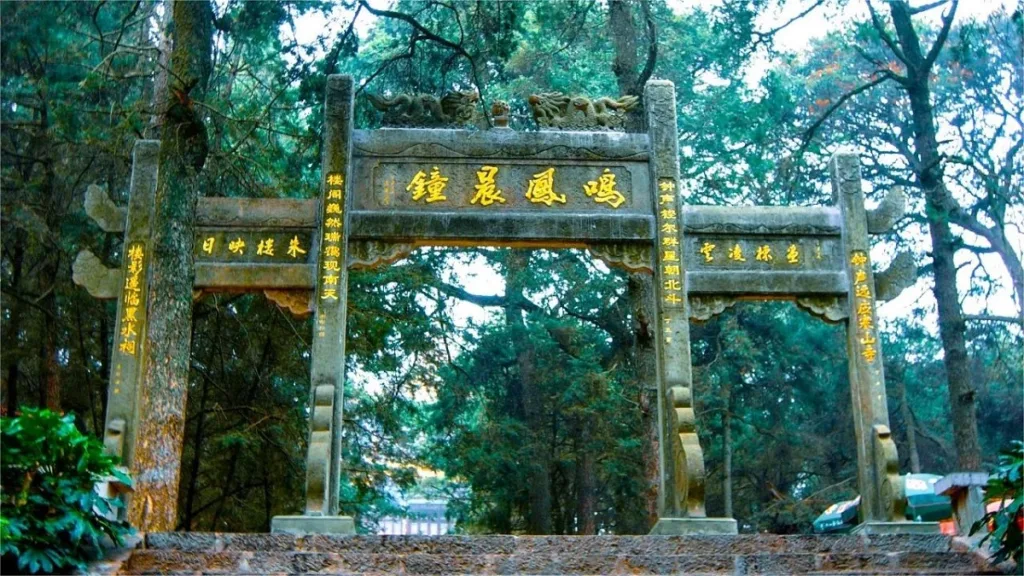
Jindian Park (金殿公园), established in 1602 by the Yunnan Governor Chen Yongbin on Mingfeng Mountain, encompasses the Lüxian Temple, Taihe Palace, and Sanyuan Temple, collectively covering an area of 1773 acres. The park derives its name from the grand hall constructed of brass, which radiates dazzling golden light when illuminated by sunlight, creating a picturesque scene amidst the lush greenery of the valley, hence earning the moniker “Jindian” or “Golden Hall.” It is also known as the Copper Tile Temple. During the Qing Dynasty, it served as the residence of Wu Sangui, a prominent historical figure.
The park features a small mountain, offering leisurely walks amidst verdant trees and meticulously manicured flower gardens, creating a refreshing atmosphere. Along the paths, visitors encounter elegant ancient architectural relics and exhibitions detailing Wu Sangui’s life, providing opportunities for exploration and learning. Additionally, visitors can engage in activities such as coin tossing and bell striking, seeking good fortune.
Inhaltsübersicht
- Grundlegende Informationen
- Standort und Transport
- Highlights of Jindian Park
- Vlog about Jindian Park
- Attractions near Jindian Park
Grundlegende Informationen
| Geschätzte Dauer der Tour | 2 Stunden |
| Ticketpreis | Kostenlos |
| Die Öffnungszeiten | 7.30 – 18.00; Last admission: 17.30 |
| Telefon Nummer | 0086-0871-65018306 |
Standort und Transport
Located atop Mingfeng Mountain in Panlong District, Kunming City, Yunnan Province, Jindian Park is situated at 771 Chuanjin Road. To get there, you can take bus 10, 57, 71, 146, 147, 159, Z146, or Z150 and get off at Jindian Parking Lot Stop (金殿车场).
Highlights of Jindian Park
Golden Hall in Taihe Palace

At the heart of Taihe Palace lies the Forbidden City, an extraordinary bronze structure measuring over 300 meters in circumference. The centerpiece of the Forbidden City is the North Pole Zhenwu Hall, a majestic bronze edifice standing 6.7 meters tall, 7.8 meters wide, and 7.8 meters deep. Adorned with arches on all sides, the roof features intricate carvings of cloud dragons, dragon heads at both ends, and a central depiction of dragon flames and pearls. The ridge is embellished with sculptures of figures, horses, and fish. The walls of the hall are adorned with a combination of 36 lattice doors. The main entrance showcases relief carvings of auspicious cloud dragons and phoenixes, while geometric patterns of the Chinese character “Shou (寿)” adorn the side and rear doors. Inside the hall, an octagonal coffered ceiling is adorned with relief carvings of cloud dragons. The central bronze statue depicts Zhenwu, a deity in Taoism, flanked by bronze statues of Golden Boys, Jade Maidens, and the Tortoise and Snake Generals. Historian Fang Guoyu estimates that more than 250 tons of bronze were used in the construction of the bronze hall, making it one of the largest and heaviest bronze buildings in China and one of the four major bronze halls in the country.
Exhibition in Grand Preceptor’s Palace

Adjacent to the Forbidden City lies the Exhibition Hall of the Grand Preceptor’s Palace. Originally the site of the Tian Shi Temple, it was transformed into a two-story courtyard during the Republic of China era. In 1993, it was converted into the Jindian Cultural Relics Exhibition Hall, featuring exhibits such as the Great Sword of Wu Sangui and the Seven-Star Sword of Zhenwu, as well as the Taihe Palace Cultural Relics Exhibition Hall. The exhibition also includes displays of Chen Yuanyuan and Wu Sangui’s paintings, as well as an exhibition of Western Zhou bronzes. Of particular note is the “Seven-Star Treasure Sword,” weighing over 30 kilograms, with seven bronze stars embedded on both sides of the blade. It was originally housed in the bronze hall and is considered Zhenwu’s “treasured weapon for subduing demons and monsters,” cast during the reign of Emperor Kangxi in the Qing Dynasty (1671). Another notable exhibit is the wooden-handled broadsword, weighing 6 kilometers, which was used by Wu Sangui and displayed as a symbol of his martial prowess after the construction of the bronze hall.
Bell Tower
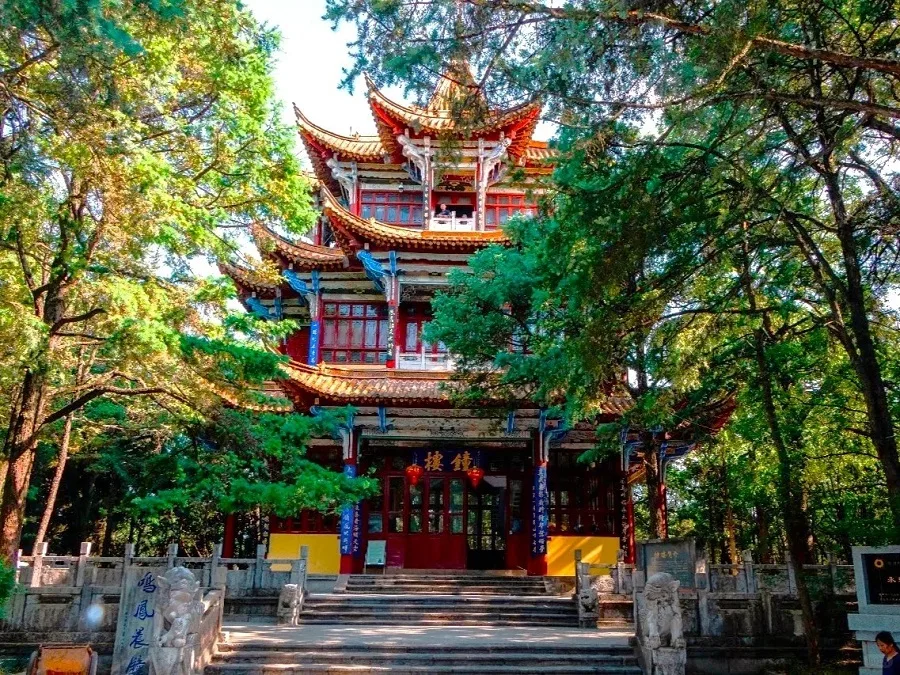
The Bell Tower stands proudly at the summit of Mingfeng Mountain, towering at an elevation of 2058 meters. Constructed in 1983 and completed in October 1984, this towering structure measures 29 meters in height and comprises three stories, forming a “十” (cross) shape. Each level boasts 12 corners, totaling 36 corners across the entire tower. During construction, with no access roads, all building materials had to be carried up the mountain manually. At the apex of the dome on the third floor hangs a magnificent bronze bell. This bell originally hung at the Yihua Tower, the southern gate of Kunming, cast during the Ming Dynasty in the twenty-first year of the Yongle reign (1423). Standing at 3.5 meters tall with a circumference of 6.7 meters, weighing a staggering 14 tons, it is the largest surviving ancient bronze bell in Kunming. Initially used for timekeeping, it later served as an alarm bell. In 1953, with the demolition of the Xuanhua Tower, the bronze bell was relocated to the Ancient Pavilion Park outside the Zhaoyuan Tower. In 1970, it found its current home in the scenic area of Jindian.
Kunming Yuanlin Botanical Garden
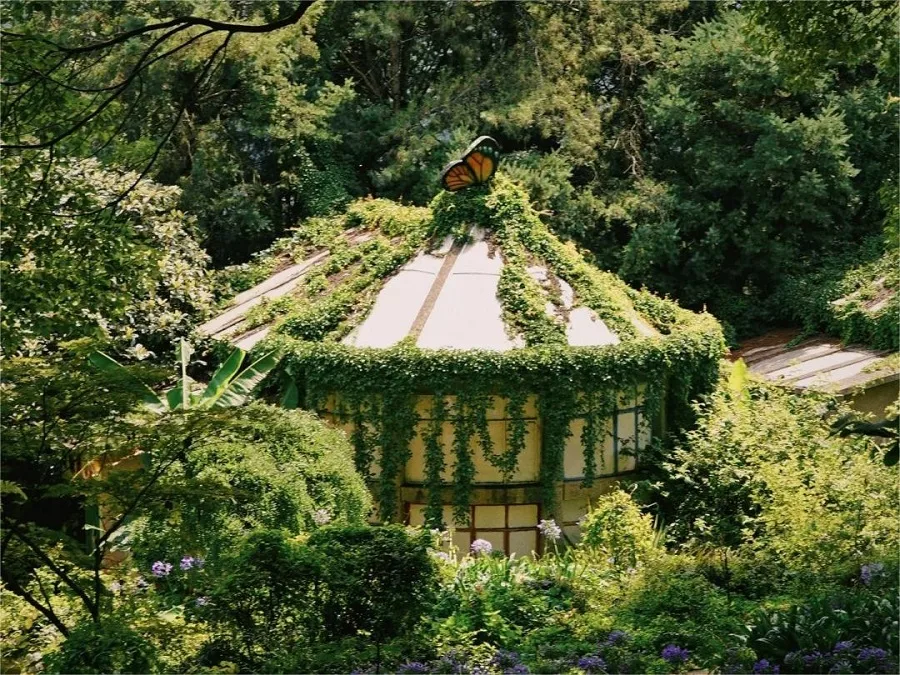
To the south of Mingfeng Mountain sprawls the Kunming Yuanlin Botanical Garden, covering over 600 acres. Divided into various themed zones such as the Camellia Garden, Rhododendron Garden, Flower Greenhouse Area, Magnolia Garden, Rose Garden, Endangered Plant Zone, and Fruit Garden, the garden boasts more than 2500 species of plants. The Camellia Garden, the largest thematic garden, spans over 200,000 square meters and hosts over 10,000 camellia plants. Meanwhile, the Rhododendron Garden, spanning 60 acres, primarily features Yunnan rhododendrons. This botanical wonderland offers visitors a chance to immerse themselves in the diverse flora of the region, showcasing the rich biodiversity of Kunming’s plant life.
Vlog about Jindian Park
Attractions near Jindian Park

Yunnan Wild Animal Park
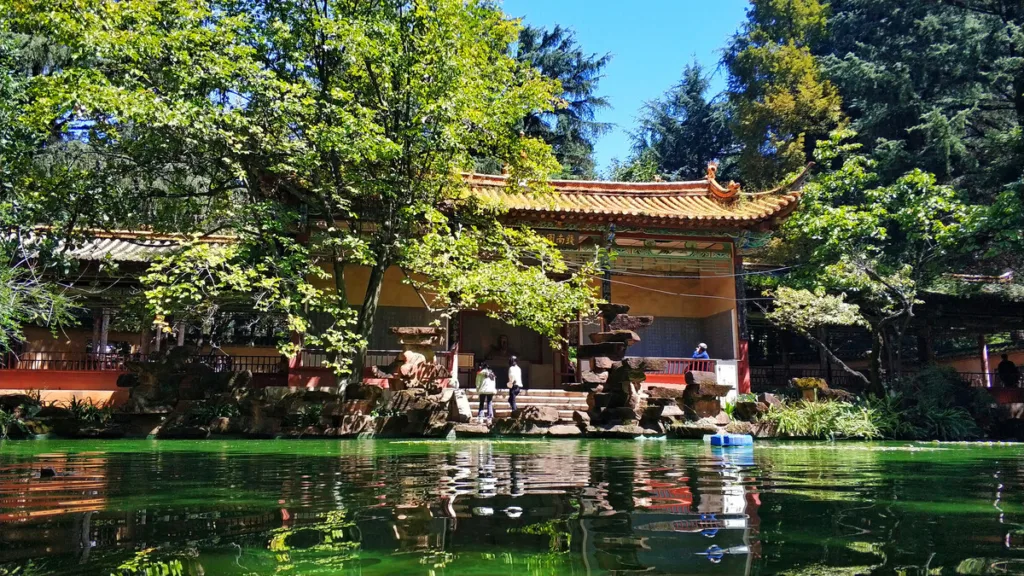
Tanhua Temple

Kunming World Horticultural Expo Garden
Kunming Attraktionen, Historische Stätten in Yunnan